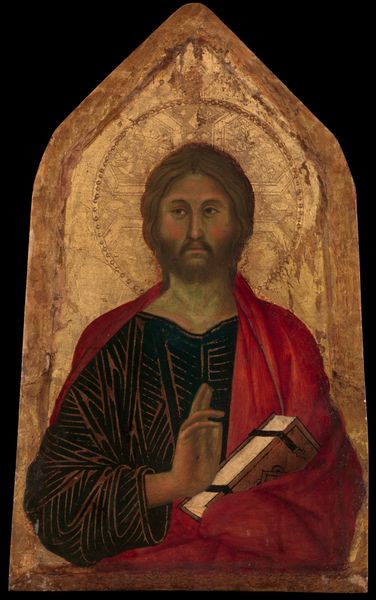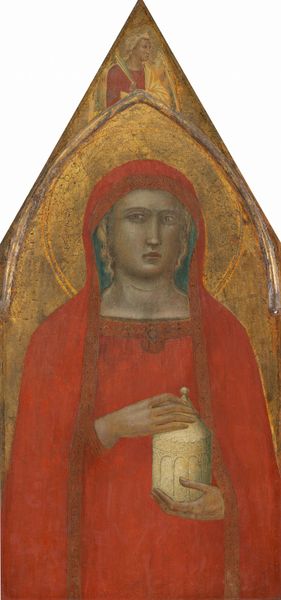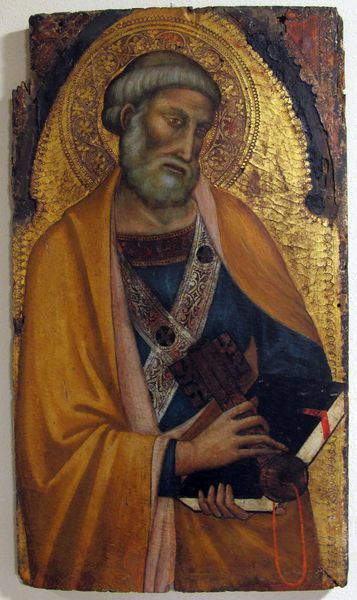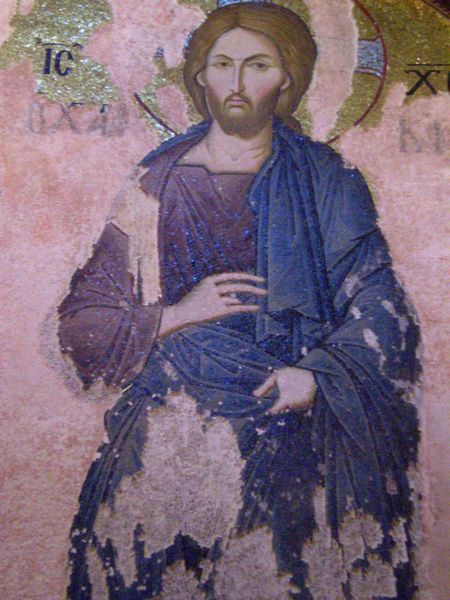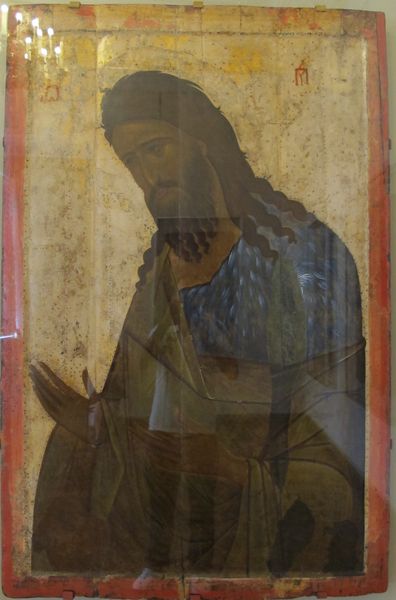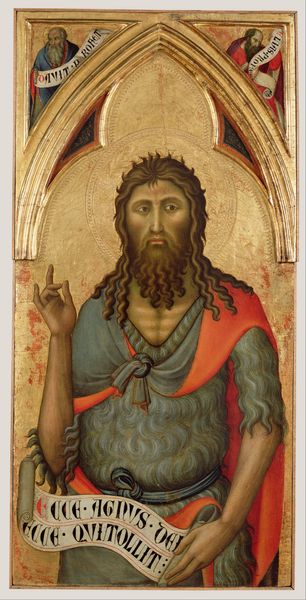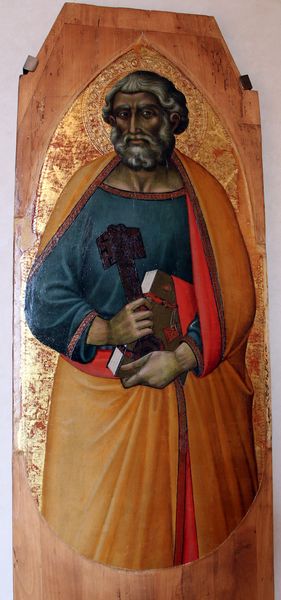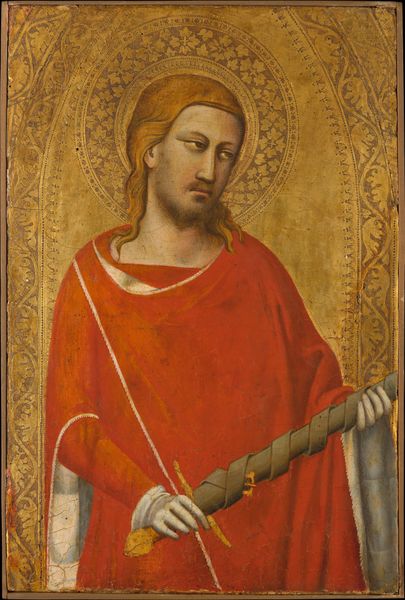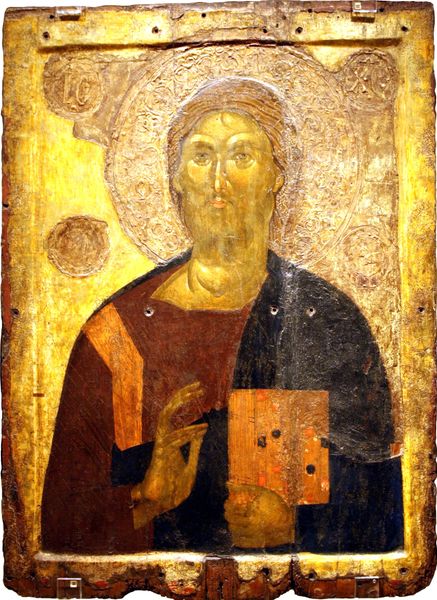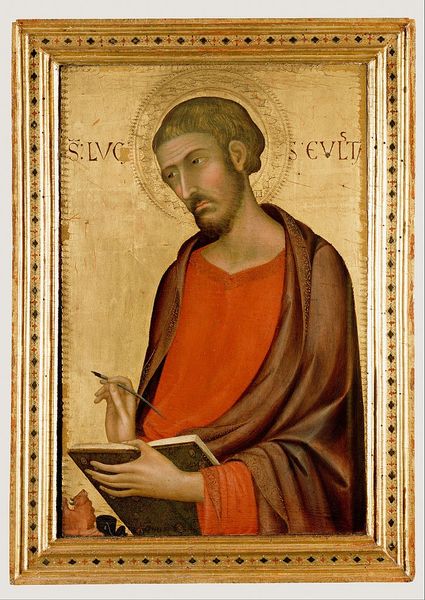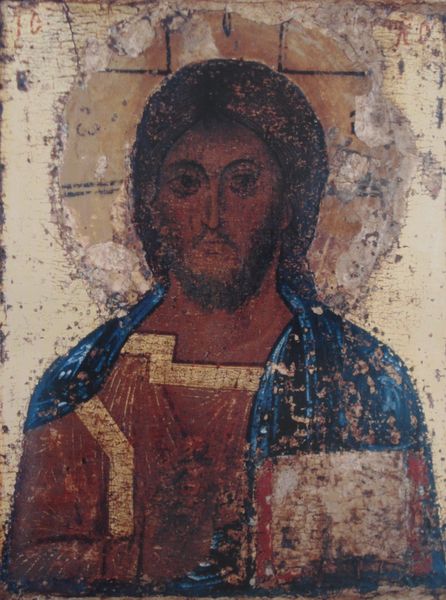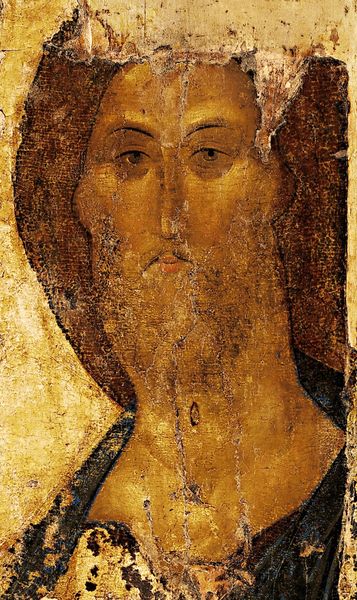
tempera
#
portrait
#
gouache
#
medieval
#
tempera
#
watercolour illustration
#
italian-renaissance
#
portrait art
Copyright: Public domain
Editor: This is “Tondo Con S Comsa” by Álvaro Pires de Évora, created around 1430, using tempera. I'm immediately drawn to the figure's intense gaze and the circular composition. How do you interpret this portrait, especially within its historical context? Curator: Looking at this, I consider the rising popularity of portraiture during the early Renaissance, especially as a reflection of increasing self-awareness and individualism. Notice how the gold background, reminiscent of earlier medieval icons, is juxtaposed with the more realistic portrayal of the individual. Where do you think such portraits might have been displayed, and what purpose would they have served? Editor: I imagine they might be commissioned by wealthy patrons or the church, perhaps displayed in private chapels to memorialize someone important, but isn't the rendering fairly stylized, especially with the limited use of chiaroscuro? Curator: Indeed. The flatness and limited shading can be viewed not just as a stylistic choice but as a representation of a specific visual language that the patron would have been familiar with. These types of idealized depictions served to construct a specific kind of authority or legacy within a family or institution. Does that perspective shift how you view it at all? Editor: That makes me see the political implications behind even seemingly straightforward portraits. It’s not just about likeness but about crafting a desired image, almost like early public relations. Curator: Precisely. The artist isn’t merely capturing an image but participating in a visual dialogue about power, status, and memory. Considering this reframes how we analyze even simple portraits. Editor: It is indeed more layered than initially seemed! Thank you for the enriching perspective.
Comments
No comments
Be the first to comment and join the conversation on the ultimate creative platform.
